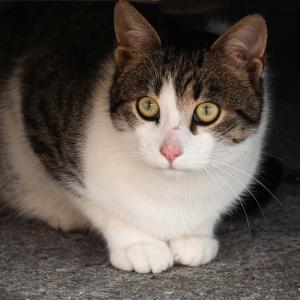
By Ruth Simmons

With International Cat Day coming up on August 8, it is a good time to focus on one of our favourite pets.
We are a cat loving nation and there are approximately 12.5 million cats in the UK.
Like any species, cats can become stressed, but often the signs are subtle, or we don’t recognise the behaviour as a sign of stress.
Various factors can cause stress such as interactions with people, the environment and, most commonly, interactions with other cats. They’re naturally territorial so they may not enjoy social interactions with other cats and see them as a threat.
Two common conditions we may not necessarily associate with stress in a cat are overgrooming and cystitis.
With overgrooming, they can cause bald patches, commonly on their undercarriage or sides. In cystitis, they may urinate more often and produce small amounts. They can also start urinating in different places such as the bath!
With both of these conditions it is advisable that you take your cat to the vet for a check over to ensure there is nothing else underlying and so they can receive treatment.
A trip to the vets can be a stressful event in itself though. Ensure the carrier you use is solid, non-collapsable and opens from the top. Ideally have your cat familiar with the carrier beforehand by leaving it out for them to investigate. During transport have a blanket to partially cover the basket but still allow for ventilation. Pheromone sprays that can significantly help to reduce stress during transport too.
There are ways to reduce stress in the home. Think carefully about the number of cats you have; plenty of cats are happy being the only cat in the house. If you do have more than one cat, ensure that they all have access to their own resources, a general rule for litter trays, feeding and water bowls is one for each cat plus one more, in different locations around the house. Allow your cat to come to you for affection so they feel they have a choice and control over the interaction.
If your cat goes outside, ideally they should be able to choose when they come and go. A microchip cat flap is a great way to facilitate this. If you have an indoor-only cat then ensure they can express natural cat behaviour such as providing objects to climb up.
Plug-in diffusers releasing pheromones into the environment are great at reducing stress such as visitors to the house.
Although all stress can’t be avoided, appreciating the triggers should help keep it to a minimum.